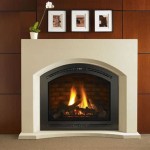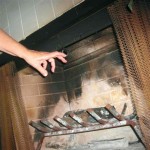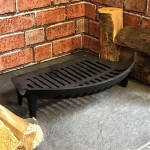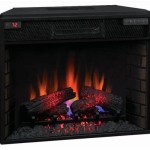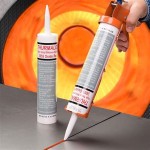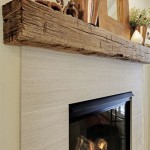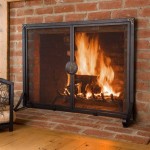Wood Burning Fireplace with Gas Starter Pipe: A Comprehensive Overview
A wood-burning fireplace remains a coveted amenity in many homes, offering both aesthetic appeal and supplemental heating. The inclusion of a gas starter pipe significantly enhances the convenience of operating a wood-burning fireplace. This article provides a detailed examination of wood-burning fireplaces equipped with gas starter pipes, covering their functionality, benefits, safety considerations, and maintenance.
The primary function of a wood-burning fireplace is to provide a contained space for burning wood to generate heat. They consist of a firebox, where the combustion occurs; a chimney, which vents the smoke and gases outside the building; and a damper, which controls the airflow. While offering a traditional heating solution and a visually appealing ambiance, starting a wood-burning fire can sometimes be challenging, particularly for individuals unfamiliar with traditional fire-starting methods.
A gas starter pipe, also known as a gas log lighter, addresses the difficulties associated with initiating a wood fire. It’s essentially a small gas pipe, typically made of iron or steel, installed within the firebox, usually positioned beneath the grate where wood is placed. The pipe features small holes or slits along its length, allowing gas to escape when the gas valve is opened. When ignited, the gas flame provides a concentrated heat source that quickly ignites the wood, eliminating the need for extensive kindling or other fire-starting aids like paper and small twigs.
Functionality and Components
The gas starter pipe system consists of several key components. The gas pipe itself is the central element, designed to withstand the high temperatures within the firebox. A gas valve, usually located outside the firebox, controls the flow of gas to the pipe. This valve is connected to the main gas line of the house, which should be installed by a qualified gas technician or plumber. A key or handle is used to operate the gas valve, allowing the user to turn the gas on and off as needed. A safety shut-off mechanism may also be present, designed to automatically cut off the gas supply in the event of a malfunction or gas leak.
Operation is straightforward. To start a fire, the user first arranges the wood logs on the grate above the gas starter pipe. The gas valve is then opened, allowing gas to flow through the pipe. A long-handled lighter or match is used to ignite the gas escaping from the holes in the pipe. The resulting flame ignites the wood, and once the wood is burning steadily, the gas valve is turned off. The user then closes the fireplace door or screen, allowing the fire to burn safely and efficiently.
Benefits of Using a Gas Starter Pipe
The inclusion of a gas starter pipe offers several distinct advantages. The most significant benefit is the ease of starting a fire. The gas flame provides a consistent and concentrated heat source, significantly reducing the time and effort required to ignite the wood. This is particularly beneficial for individuals who are new to using wood-burning fireplaces or for those who find traditional fire-starting methods challenging. It allows for quick and effortless fire starting, even in less than ideal conditions, such as damp wood or fluctuating weather.
Another benefit is the reduction in the amount of kindling and other fire-starting materials needed. With a gas starter pipe, there's less reliance on paper, small twigs, or chemical fire starters, which can be messy and potentially hazardous. This not only simplifies the fire-starting process but also reduces the potential for using flammable materials that could contribute to chimney fires.
Furthermore, a gas starter pipe promotes a cleaner and more efficient fire. By igniting the wood quickly and evenly, it helps to establish a strong draft in the chimney, reducing the amount of smoke released into the room. This contributes to a more comfortable and healthier indoor environment. Properly burned wood also results in less creosote buildup within the chimney, decreasing the risk of chimney fires and the frequency of chimney cleaning.
Safety Considerations and Maintenance
Safety is paramount when operating a wood-burning fireplace with a gas starter pipe. Regular inspections are essential to ensure that all components are functioning correctly. The gas pipe should be checked for any signs of corrosion, damage, or leaks. The gas valve should be inspected for proper operation and tightness. Any suspected gas leaks should be addressed immediately by a qualified gas technician.
Proper ventilation is crucial. Always ensure that the damper is fully open before lighting the gas starter pipe or the wood. This allows for the proper venting of smoke and gases up the chimney. Never leave a fire unattended, and always use a fireplace screen or door to prevent sparks and embers from escaping the firebox.
Regular maintenance is essential to ensure the safe and efficient operation of the fireplace. The chimney should be inspected and cleaned annually by a qualified chimney sweep to remove any creosote buildup. The firebox should be cleaned regularly to remove ash and debris. The gas starter pipe should also be cleaned periodically to remove any soot or carbon deposits that may accumulate over time. Proper maintenance not only prolongs the lifespan of the fireplace but also reduces the risk of fire hazards and ensures optimal performance.
In addition, it is crucial to understand the local building codes and regulations regarding fireplace installations and gas line connections. A permit may be required for the installation of a gas starter pipe, and the work should be performed by a licensed and qualified professional. Adhering to these regulations ensures that the installation is safe and compliant with industry standards.
Using dry, seasoned wood is also crucial for safe and efficient burning. Wet or unseasoned wood produces more smoke and creosote, increasing the risk of chimney fires. Dry, seasoned wood burns cleaner and more completely, providing more heat and reducing the amount of maintenance required.

How To Install A Log Lighter Fireplace Gas Starter Pipe

Gas Fireplace Starters Log Lighter Universal
.png?strip=all)
How To Install A Log Lighter Fireplace Gas Starter Pipe

Gas Fireplace Starters In Chicago Capital Chimney Corp

Gas Starters In Fireplaces And Safety Hunker

Want To Convert Gas Wood Fireplace Full Service Chimney
Is A Gas Log Lighter Dangerous

Gas Fireplace Starters In Chicago Capital Chimney Corp

Why You Can T Burn Wood In A Gas Fireplace But Starter

How To Install A Log Lighter Fireplace Gas Starter Pipe

